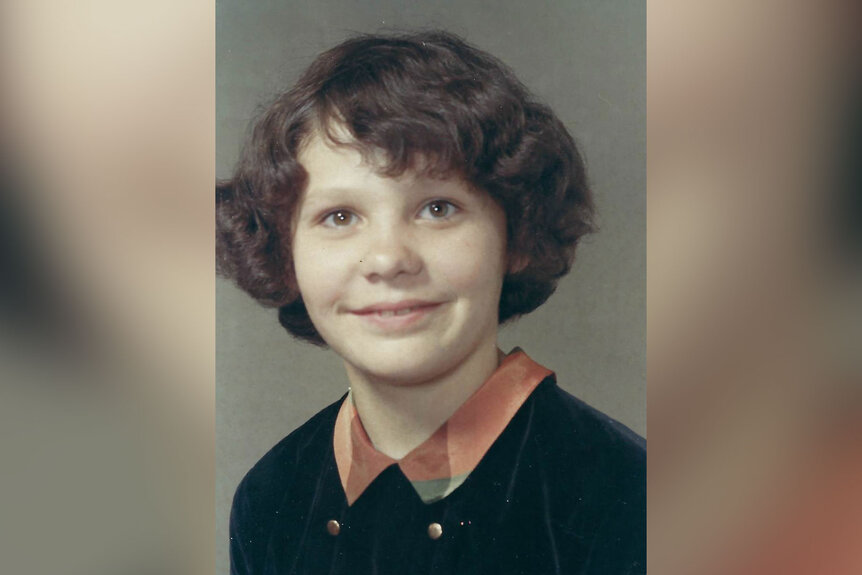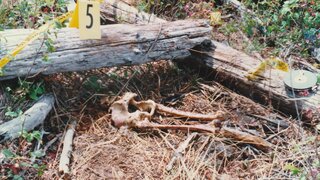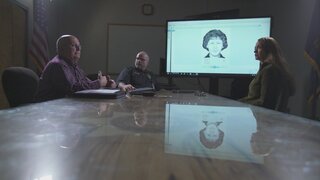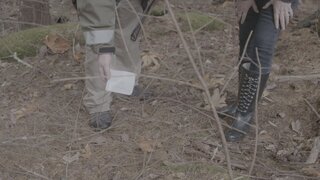Create a free profile to get unlimited access to exclusive videos, breaking news, sweepstakes, and more!
In ‘The Jane Doe Murders’ A Victim Is Finally Identified — What About Her Killer?
An Oregon Jane Doe was finally identified decades after she was found murdered in the woods.
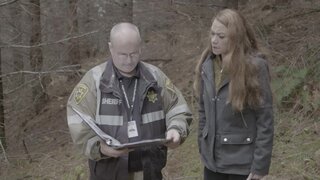
Thousands of murder cases remain unsolved in the United States — and many of the victims remain without a name. Known as “Jane Doe,” “John Doe,” or “Baby Doe,” these victims wait for both their identity to be restored and justice to be served.
It’s an injustice that retired crime scene investigator Yolanda McClary aimed to solve in the case of one Oregon Jane Doe in Oxygen’s new special “The Jane Doe Murders.” McClary, with the help of Polk County Sheriff’s Office investigators and genetic genealogists, worked to identify a woman who was found dead 23 years ago in Polk County — and to solve her murder.
“I want to give her name back. I want to target her killer,” McClary said in the special.
So, was McClary able to crack the case?
The Polk County Jane Doe was found dead and wrapped in a tarp off a wooded trail by a father and son out hunting in September 1996. Investigators were quickly able to obtain some clues from her skeleton: The wide pelvis indicated she was female, and they could guess she was middle-aged and likely had children from the state of her bones.
“It is amazing how much information bones can tell us: How old our victim is, if they ever had a child, how tall they are, possibly,” McClary explained in the special.
They also knew she was certainly killed.
“The manner of death is still a homicide because she very clearly didn’t wrap herself up in a tarp on that hill,” John Williams a detective for the Polk County Sheriff’s office, explained.
Near her body, investigators found another crucial clue: a bag containing a pair of pants, underwear, a shirt, socks, and shoes — all clothing likely belonging to a male, judging by the size. On the underwear, there was a semen stain, but it yielded no DNA matches when the sample was run through the system. Authorities had hit a dead end. They were unable to identify a suspect, a cause of death, or even who the victim was.
Now, decades later, McClary was able to identify the body with new genetic genealogy techniques. DNASolutions, a private lab in Oklahoma, was able to extract DNA from the bones. The whole process took about a month, and a new DNA profile was created for the Jane Doe. Then, that profile was uploaded to an open-source genealogy database to see what matches exist for the profile. From there, the scientists built out a family tree to narrow down possible matches.
“We’re just, you know, taking DNA, adding it to our genealogical research,” one of the genealogists who worked with McClary, Charles McGee, told Oxygen.com in a recent interview. “It’s the combination of DNA testing with traditional genealogy.”
And it worked: McClary and her team were able to locate a possible match, a woman named Kathy Buxton, who was around the right age and had been living near the area where the crime occurred. After locating her sister, Linda Amsler, McClary asked her for DNA to prove the Jane Doe was Buxton.
Amsler hadn’t seen her sister in decades, explaining in the special, “My dad took off with her to Oregon once [another sister] and I got adopted to the same family, and I didn’t know what had happened to Kathy. She was just gone my whole life.”
The DNA matched. Amsler now finally knew what happened to her sister. “It hurt so bad,” Amsler admitted.
McClary and her team were also able to locate some of Buxton’s children to let them know what happened to their missing mother and reunite them with an aunt they never knew. It was an emotional moment for the family as they finally received some closure about Kathy Buxton’s demise.
Of course, one piece of the puzzle remains: Who killed Buxton?
Well, as seen in the special, McClary and her team worked to identify possible suspects in the case, crossing them off one by one, whether it was due to lack of opportunity or motive. They did, however, zero in on one person: the man Buxton was married to around the time she went missing, Brian Clifton.
Clifton has a history of violence. In 1973, he was convicted of murder after he strangled a female hotel clerk he accused of robbing him and was sentenced to life in prison. However, he was let out on parole in 1981, according to the special. Clifton married Buxton in 1984 — but McClary did not find a report of her disappearance. Clifton married someone else, although McClary couldn’t ever locate a divorce license for Buxton and Clifton.
McClary tracked down Clifton’s sister Brenda to explain the situation, and Brenda sent over a DNA sample to see if it matched the DNA found on the underwear at the crime scene. It was a sibling match, indicating whoever left the semen sample at the crime scene is closely related to Brenda, according to the show.
Clifton was questioned by Polk County Sheriff’s Office investigators on Dec. 28, and he denied any involvement with Buxton’s disappearance. Polk County investigators are actively investigating the case.
For more on this case, watch Oxygen’s “The Jane Doe Murders” streaming now on Oxygen.com.
